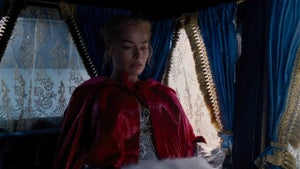Article
The Evolution of Windows interfaces
- December 30, 2009
- Updated: July 2, 2025 at 9:17 AM
Going back to the past is sometimes the only way to understand the present – and even the future. Now that we’re about to enter 2010, blogs and newspapers are starting to publish their own analysis of this first decade of the 21st century. But what about software? Can we trace it back to its origins and see what it looked like five, ten or twenty years ago? In the case of Windows, the answer is yes. We’ve been able to find images from all the versions of Windows released up to now, from 1.01 to Seven.
Windows 1.01 (1985)

You might not have been born yet when Windows 1.0 was released. Don’t complain about it though. With such a tacky combination of colors, this first version of Windows wasn’t really something worth viewing.
Windows 2.03 (1987)

It took Microsoft two long years to release the second version of Windows. Windows 2 was supposed to improve the first version, but the color combination didn’t get any better. The most outstanding feature, however, was the Control Panel, with an overbloated menu of three options.
Windows 3.0 (1990)

In 1990 Windows started to look like a real operating system – or at least like the one we know today, with its windows, menus and icons. We already had NotePad, Calculator and Paint (known as Paintbrush at that time) and all the apps were stored in the so called Program Manager.
Windows 3.1 (1992)

The interface in Windows 3.1 didn’t change that much from the previous version, except for better program icons. This was the first version of Windows I ever used. By the way, did you notice that the Sound Recorder hasn’t changed at all in 15 years?
Windows 95 (1995)

This looks way more familiar, doesn’t it? The dull-to-death gray background was replaced by the classic Windows blueish green, or greenish blue – not really an improvement. Program Manager is now gone, and can now be placed anywhere on the screen. This is the first version of Windows to feature the Start menu and the taskbar, and the minimize, maximize and close buttons on each Window change to the well-known underscore, square and x symbols.
Windows NT 4.0 (1996)

Windows NT didn’t bring any significant changes to the interface, nor did it replace the background with even more boring colors. In fact, it looks exactly the same as Windows 95.
Windows 98 (1998)

The most important change in Windows 98 regarding the previous version is the Quick Launch bar, which enables you to run programs without having to browse the Start menu or look for them on the desktop. Talking about the Start Menu, this feature was improved as well with support for right click and the ability to move items around.
Windows 2000 (2000)

The interface in Windows 2000 doesn’t feature any outstanding improvements, though the background color chanhes from greenish blue to a more navy blue. Much better!
Windows Me (2000)

Windows Millenium is that one operating system that everyone tries to leave behind – even those who created it. To be honest, it didn’t have any important new features, but it did include some really annoying characteristics we’d better not mention here.
Windows XP (2001)

Windows XP was released, and there was light. Squared windows and apps were replaced by rounded corners, available in three flavors: blue, silver and olive. It was a complete interface overhaul and though it felt a bit cheesy, it was way better than the gray style of previous versions.
Windows Server 2003 (2003)

Sysadmins and network managers are serious people, and maybe that’s why Windows Server replaces rounded corners with squared Windows again – despite having been released after Windows XP. Its appearance is very similar to Windows 2000, but with better icons.
Windows Vista (2006)

In 2006 Microsoft thought that we would probably be tired of the blue taskbar, and released a new Windows version with a black taskbar and a rounded Start button. Other important features in Windows Vista were transparency effects, a collection of mostly useless gadgets and the ability to manage apps and windows in a 3D environment.
Windows 7 (2009)

The most important change in Windows 7 interface is the taskbar, where program shortcuts are mixed up with running apps, besides having real time previews and jump lists. The rest remains more or less the same, except for the new AeroShake and AeroPeek functions.
[Via: OnSoftware Spain]
You may also like
 News
NewsAfter two decades of waiting for it, this medieval game that fans kept asking for is back
Read more
 News
NewsWe do not lose faith in the adaptation of 'One-Punch Man'. The project is still going strong, although we will have to wait
Read more
 News
NewsKeke Palmer will star in the adaptation of this 1980s movie
Read more
 News
NewsIf you're a fan of Yellowstone, you can't miss this period series that just premiered on Netflix
Read more
 News
NewsThe surreal stories of Chuck Palahniuk will return to the big screen with this adaptation
Read more
 News
NewsThe director of 'Wuthering Heights' wants it to be the 'Titanic' of a new generation
Read more